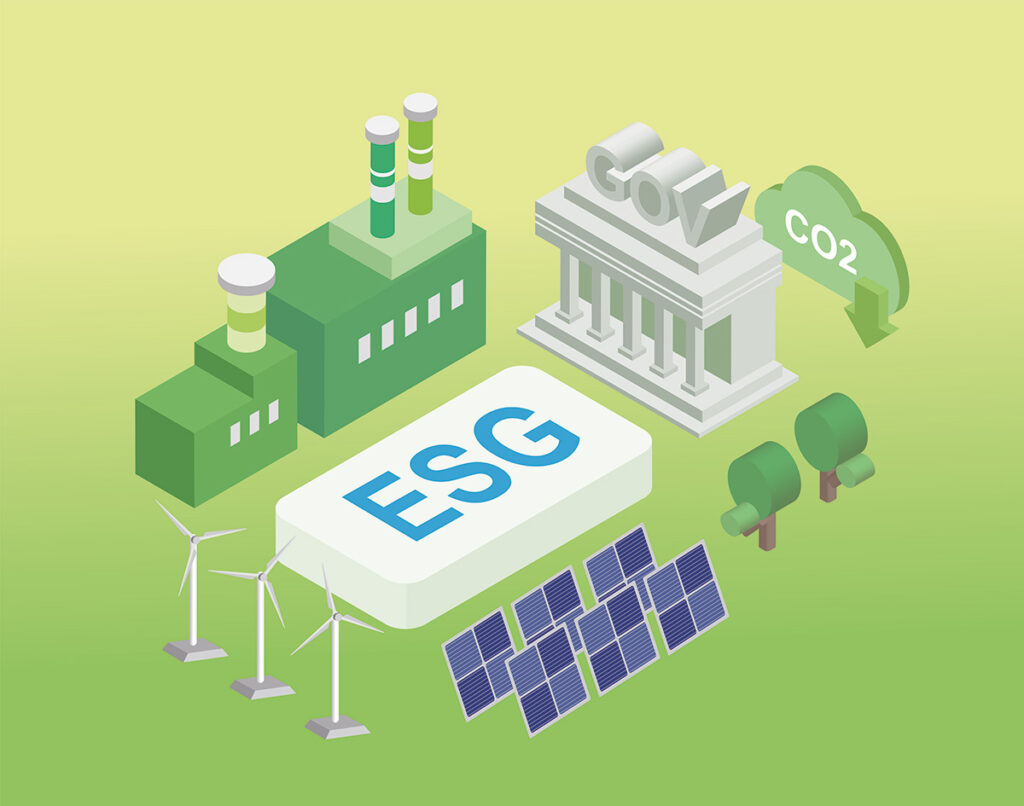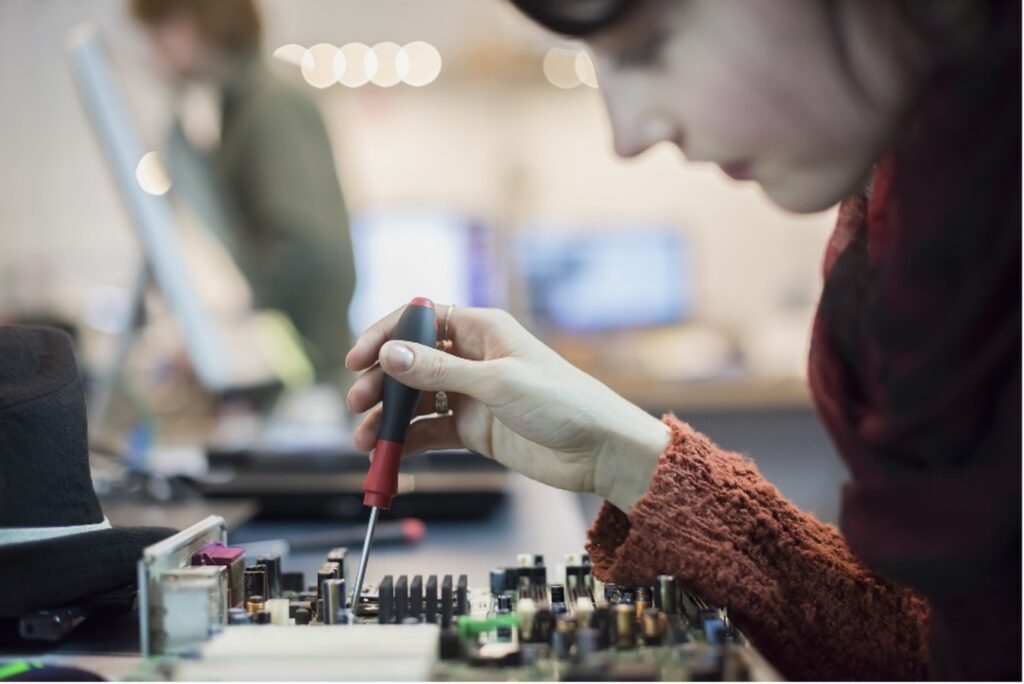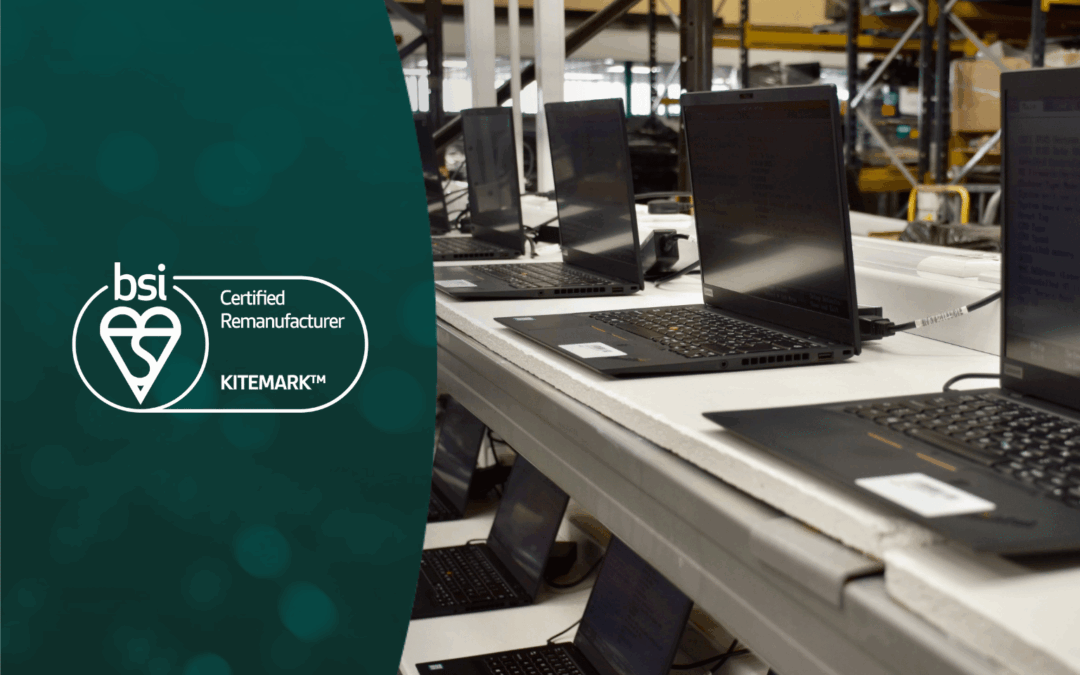When sustainable IT is discussed, our data centres are often cited as the main culprit for our technology’s emissions. Whilst it is certainly true that every minute spent online generates data and this contributes to our corporate digital carbon footprint; our energy-hungry servers are not the greatest contributor to the IT industry’s greenhouse gas emissions. It is our laptops, printers and Internet of Things devices themselves that generate twice as much carbon as the total number of data centres * Globally, there are far more end-user devices than servers; the number of connected devices worldwide is expected to reach 55.7 billion by 2025. +
How much does technology contribute to climate change?
When it comes to the total percentage of carbon emissions from our technology, various studies have estimated the CO2 footprint of the ICT sector to be somewhere between 2.3 – 3.7% of global emissions. ^ Although a 2022 report from IT market intelligence analysts, IDC Europe, proposes that this is now more likely to range between 5 – 10%. # This may not sound vast, but consider that the global aviation industry is responsible for around 2.1% of all human-induced greenhouse gases. ** CIOs are under increasing pressure when it comes to reducing the company’s digitally-created emissions. However, as organisations aim to achieve their carbon-neutral status, there must be a comprehensive understanding of current practices, before reductions can be made. Exactly how does technology affect your carbon footprint?

What is a digital carbon footprint?
The number of direct or indirect emissions that our use of technology produces, creates our digital carbon footprint. When it comes to our devices, this covers the entire lifecycle; from the sourcing of materials for components to its secure IT asset disposal. Carbon emissions are measured in carbon dioxide equivalents CO2e, an inclusive term to describe different greenhouse gases in one, single unit.
What is the carbon footprint of a laptop?
Despite the poor reputation of the data centres, when it comes to the carbon footprint of our technology, the production of the device itself generates the highest emissions, rather than its use. Some estimates state that these equate to 80% of the device’s total lifetime CO2e. + Manufacturing CO2e metrics include sourcing raw materials, smelter processing to produce alloys, asset assembly, distribution, and its subsequent use and eventual disposition.
Production.
Extensive technology emissions research by McKinsey & Company found that three-quarters of global enterprise emissions come from manufacturing, transportation and disposition. The production of their semiconductor chips makes a significant contribution. The exact emissions vary as much as 20% as they depend on the manufacturer and machine specification. ++ However, a study of 230 models, reported an average production CO2e of 331kgs; this means that 3 new laptops would generate enough emissions to fill a 3-bedroom house. ++

Supply Chain.
Once assembled, mostly in the far-east, the laptops are frequently shipped halfway around the world, often by air, rather than sea freight. Emissions are created at each stage of the journey, by each vehicle. Most laptop manufacturers state that their transportation emissions are between 6% – 12% of the devices’ total. That said, the impact of the supply chain is hard to measure. To assess their own footprint, manufacturers would need accurate figures for the entire chain. Yet, according to research by IT consulting firm, Capgemini, whilst 33% of enterprises endorse IT carbon footprint reporting, most don’t request data from their third-party vendors. For example, whilst Microsoft plans to become carbon negative by 2030; it doesn’t make CO2e disclosure mandatory within its 400,000 supplier contracts. ^^
End-user emissions.
During their independent research, Wirecutter assessed the Dell XPS13 9310, which had the average total lifetime emissions of 322 kgs CO2e – yet, its use emissions totalled just 13.9% or 44.8 kgs Co2e.
Only a third of organisations are aware that the production emissions of our devices have a higher CO2 footprint than their lifetime usage.
Capgemini Research Institute. Sustainable IT Report 2021
How can we reduce our digital emissions?
As more than 272 million laptops are manufactured annually ++ and our reliance on our assets increases, we must question, how can businesses reduce their IT carbon footprint? Naturally, CIOs may assume that to do so, they’ll need to make considerable investments, yet in reality, making CO2 reductions is highly cost-effective. Indeed, when calculating sustainability metrics, it is important to record financial cost-benefits as well as CO2e savings.
Re-evaluate your requirements.
Are devices really needed? Does there need to be a printer for every few employees or one for each floor? Does everyone who has one, need a mobile device? By optimising your resources, you could reduce end-user emissions by up to 30%. *
Extend lifespans.
As manufacturing is the majority of your technology’s carbon footprint, it stands to reason that the greatest impact would be lifespan extension.
50 – 60% of end-user emissions can be addressed by extending the lifecycle or optimising the number of devices.
McKinsey & Company. The green IT revolution.
Adopt a circular mindset.
In 2021, France passed a law which states that every electrical device must display its ‘repairability index’ enabling informed consumers to choose more responsible behaviours. And it’s working – 79% of consumers are making sustainability-led purchases. + Are frequent upgrade cycles necessary? The majority of the components within a laptop can be upgraded for continued use, either by the same employee or it can be redeployed to another user. You may sell redundant IT assets; if it really is of no further use to your business, it will be perfect for another.
Reassess purchasing habits.
As the majority of a laptop can be replaced, refurbished products can now be considered directly comparable to buying brand-new. Premium upgrades even include the external casing, keyboard and trackpad. Recommerce provides a highly cost-effective and efficient way to purchase business tech – it can help reduce your machine’s footprint by more than 85%. ++

Only purchase from responsible manufacturers.
When a new asset is the only option, choose ethical manufacturers who recycle/refurbish, have a circular design, support the EU’s Right to Repair and offer a service to extend lifetime value. HP, Cisco and Dell reuse plastic recovered from redundant IT equipment for new parts and source sustainable precious metals for their components. # Logitech have developed a third-party certified, Life Cycle Analysis which has enabled the introduction of their pioneering carbon transparency label. This states the lifecycle emissions for greater consumer choice. Roll-out across the entire Logitech product range is expected soon. HP has revamped its production so every item is completely recyclable. ## They’ve focused tirelessly on reducing their energy consumption, have created on-site renewable power facilities and are on track to exceed their goal of reducing emissions by 60% by 2025.
Re-evaluate IT asset disposal policy.
89% of organisations recycle less than 10% of their hardware.
Capgemini Research Institute. Sustainable IT Report 2021. *
Capgemini’s report also found that only 35% of businesses measure the environmental impact of the disposal of their end-of-life IT assets. Due to the e-waste crisis, disposition through environmentally friendly ITAD services should be prioritised. IT asset disposal services support businesses by guaranteeing your data privacy legal compliance. Yet after the EU and UK GDPR data destruction requirements were introduced, we have found that the practice of data shredding hard drives continues to be chosen over more sustainable secure data erasure services that use the advanced Blancco software. Understandably, businesses may feel that this is a safer option, but both guarantee that no future data security issues can arise. The sustainable approach uses the exact same principles of data governance and ITAD best practice, just without the physical destruction of the machine. This can then be reused, whether it’s redeployed, sold or donated. Recycling should always be a last resort, but when it is required, the vast majority of the components can be recovered and safely enter the remanufacturing industry. Not only will this improve your sustainability metrics, but the residual value for the asset recovery will be returned to your company; boosting your IT budget. A leading ITAD supplier will always ensure your compliance through the ITAD chain of custody; an IT asset disposal accreditation certificate will evidence that the correct compliance procedures have been followed.

Emissions from our devices are forecast to increase at an annual growth rate of 12.8%. * We require a unified commitment at a global scale for maximum impact. However, at corporate level, we can learn the importance of extending asset lifespan or optimising the number of devices on our IT inventory. By adopting a circular and ethical approach to our IT asset management and secure IT asset disposal, CIOs can begin to take decisive action to reduce their digital carbon footprint now. Sustainability is now key and directly related to business growth. Consequently, you will attract new customers and retain brand loyalty, whilst saving a substantial percentage of your budget – as well as the planet. *McKinsey & Co, +Capgemini, ^My Climate, #Built in, **ATAG, ++Circular Computing, ^^Tech Target, ##Erbis,
Taking a fully circular approach to secure IT asset disposal, tier1 provides data destruction services, whilst supporting your business with lifecycle asset management, device upgrades and our own recommerce online store. We operate to international standards, and we are proud to be the most accredited independent ITAD service in the UK. As a trusted, reliable ITAD partner, our experts guarantee your legal compliance with both GDPR legislation and the EU’s WEEE directive. To find out more about our environmentally friendly ITAD and data wiping services, contact us on 0161 777 1000 (Manchester), 01621 484380 (Maldon) or visit www.tier1.com
Resources. Logitech, World Economic Forum, Erbis, Web For Mix, My Climate, Ericsson, Built In, Mckinsey & Co, Capgemini, Cambridge Digital Innovation, Circular Computing, The Shift Project, Tech Target, ATAG, Eco Metrica, NY Times/Wirecutter, University of Oxford It Services.



